i bc27f85be50b71b1 (258 page)
Read i bc27f85be50b71b1 Online
Authors: Unknown
?:
Ventilation
RR
Set according to the amount of spontaneous ventilatory efforts by the patient; different
l:
ventilatory modes, described in Table IlI-S.I, are prescribed according to the patient's needs;
::;
patients who are unable to generate any spontaneous breaths are fully ventilated at
S;
z
respiracory rates of 12-20 breaths per minute.
�
This rate is decreased accordingly for those who are able to generate spontaneous breaths.
r
<
The amount of volume delivered with each breath is adjusted with respiracory rate to control
partial pressure of arterial carbon dioxide (Pacoz)'
�
VT
Excessive volume leads to increased airway pressures, and therefore pressures are routinely
monitored to pre .... ent barotrauma.
�
At times, hypercapnia is allowed to prevent high lung pressures due to the delivered volume
and noncompliance of lung tissue, termed permissive hypercapnia.
00
tv
�



Table ITI-B.3. Continued
00
....
....
Purpose
Serring
Characteristic
>
InspiratOry
Set to march the parient's peak inspiracocy demands; if this match is not correct, it can
�
flow rare
cause the patient discomfort while breathing with the ventilator.
\?
High flow rates deliver greater volume in less time and therefore allow longer expirarory
�
rimes (prevents hyperinflation); however, this also leads to greater peak airway pressure
�
and the possibility of barotrauma.
Z
o
If the rate is roo slow, the patient may attempt to continue to inhale against a closed circuit,
g
resulting in respiratory muscle fatigue.
,.,
Inspiratory to
The inspiratory to expiratory rario is set with the goal of allowing the ventilator to be as
o
'"
expirarory
synchronous as possible with the patient's respiratory ratio.
�
ratio
For patients who are not spontaneously breathing, this rario is set according to what is
-<
�
required to maintain adequate ventilation and oxygenation.
�
Sensitivity
Pressure change is required in the airway to trigger an ACV or PSV breath; typically -] to -3
r
:i!
em H,o.
'"
If mechanical sensors respond poorly, then respiratory muscle fatigue can occur.
'"
>
"
If [he sensors are too sensitive, then hyperventilation can develop.
�
�
ACV = assist/control ventilation; Paoz = oxygen saturation as measured by pulse oXimetry; PSV = pressure·supponed ventilarion.
Sources: Data from P Marino. The lCU Book (2nd ed). Philadelphia: Lea & Febiger, 1998; AS Slutsky. �lech3nical ventilation. American Col·
lege of Chest Physicians' Consensus Conference Is� comments). Chest 1993; 1 04: 1833; and SF Howman. Mechanical ventilation: a review 3nd update for clinicians. Hospital Physician 1999;December:26-36.

APPENDIX 111-8: MECHANICAL VENTILATION 823
nary disease who are on ventilator modes that allow them ro initiate
ventilaror-assisted breaths (assisted ventilation, assist/control ventilation, synchronous intermittent mandatory ventilation [SLMV], pressuresupported ventilation [PSV]), the therapist should realize that activity could increase the patient-generated respiratory rate. Some modes
will then, given the initiation of a breath, provide a set volume of air
(assisted ventilation, assistlcontrol ventilation, SIMV) that could
increase the likelihood of hyperinflation owing to autO PEEP. This can
also happen in modes that do nOt deliver a set volume of air (PSV),
because inspiration is assisted with positive pressure.
Barotrauma
Barotrauma refers to damage ro the lungs caused by excessive airway
pressure. Many of the alternative modes of ventilation are geared
toward reducing this complication (see Table III-B.2). In the normal
lung, spontaneous inhalation without ventilatory suppOrt takes place
because of negative pressure. The volume of inhaled air is limited by
the return of intrapulmonary pressure back to atmospheric pressure
in the lungs during inhalation. Because mechanical ventilation is predominantly delivered with positive inspiratory pressure, these normal physiologic mechanisms for preventing such trauma are bypassed,
and pressures in the lung exceed normal pressures. Another consideration is that many of the lung conditions requiring mechanical ventilation do not uniformly affect the lungs (adult respiratory distress syndrome, pneumonia). Inhalation volumes are delivered to those
areas that are still normal, which can overdistend (causing high pressure) as a result. This can produce stress fractures in the walls of the alveoli, thus exacerbating the acute lung condition.7,. Infants who are
mechanically ventilated are five times more likely to develop bronchopulmonary dysplasia than are infants who are not mechanically ventilared.' It is thoughr thar batorrauma exacerbates the acute lung
injury associated with adult respiratory distress syndrome.' Other
complications associated with barotrauma include pneumothorax
and subcutaneous emphysema.j
The following are other possible complications of mechanical
ventilation2,J.6:
• Improper intubation can result in esophageal or tracheal tears.
If the artificial airway is mistakenly placed in the esophagus and is


824 ACUTE CARE HANDBOOK FOR PHYSICAL TIIERAI)ISTS
not detected, gastric distention can occur with the initiation of positive pressure.
• Oxygen toxiciry: Oxygen levels rhar are roo high and maintained
for a prolonged rime can resulr in (1) subsrernal chesr pain rhar is
exacerbared by deep brearhing, (2) dry cough, (3) rracheal irrirarion,
(4) pleuriric pain wirh inspirarion, (5) dyspnea, (6) nasal sriffness
and congesrion, (7) sore rhroar, and (8) eye and ear discomfort.
• Cardiovascular: High positive pressures can result in decreased cardiac ourput from compression of great vessels by over-inflated lungs.
Weaning from Mechanical Ventilarion
The process of decreasing or discontinuing mechanical ventilation in a
patient is referred to as the weaning process.6 A contributing factor to a
successful wean from ventilatory support is the resolution or stability of
rhe condirion rhar led to rhe need for venrilarory supporr. The parient criteria for an attempt at weaning from mechanical ventilation include
• Spontaneous breathing
•
Fracrion of inspired oxygen <50% and PEEP <5 cm H20 wirh
oxygen saturation as measured by pulse oximetry >90%
• Negarive inspirarory force >20 em H20
•
Respiracory rate <35
•
Respiratory rareNT rario of
indicares shallow and rapid brearhing and is a powerful predictor
of an unsuccessful wean)IO
Examples of weaning mer hods include
• IMY or SIMY: Decreasing rhe number of brearhs per minure
that the ventilator provides require the patient ro increase his or
her spontaneous breaths. This is commonly lIsed after surgery,
while patients are waking up from anesthesia. These patients typically have nor been on supporr for an exrended period of rime and do nor usually have a lung condirion rhar required rhem to be inrubated in the first place. As soon as respiratory drive and spontaneous breathing rerum, it is expected that the patient can be removed from ventilatory suppOrt.